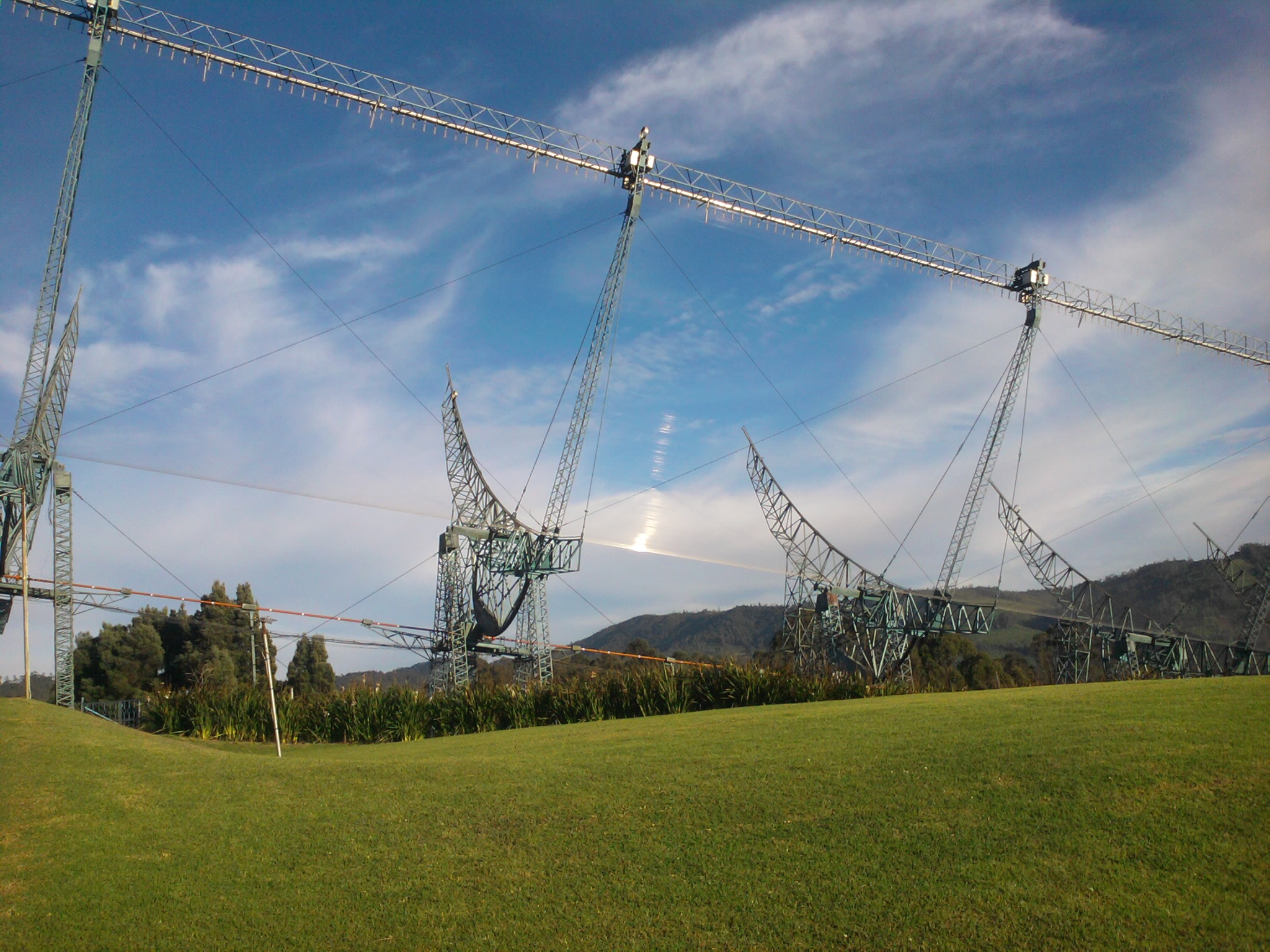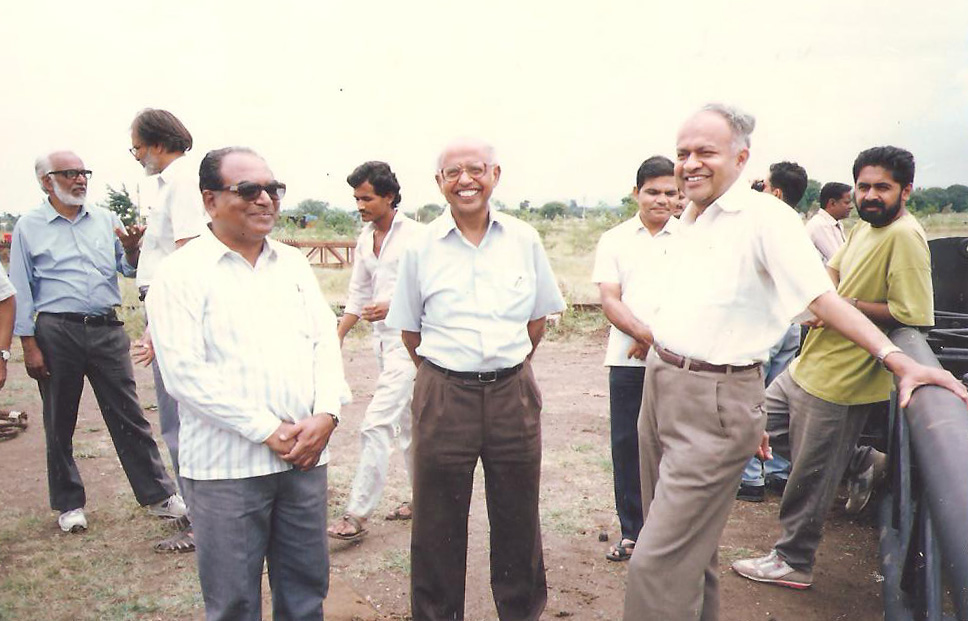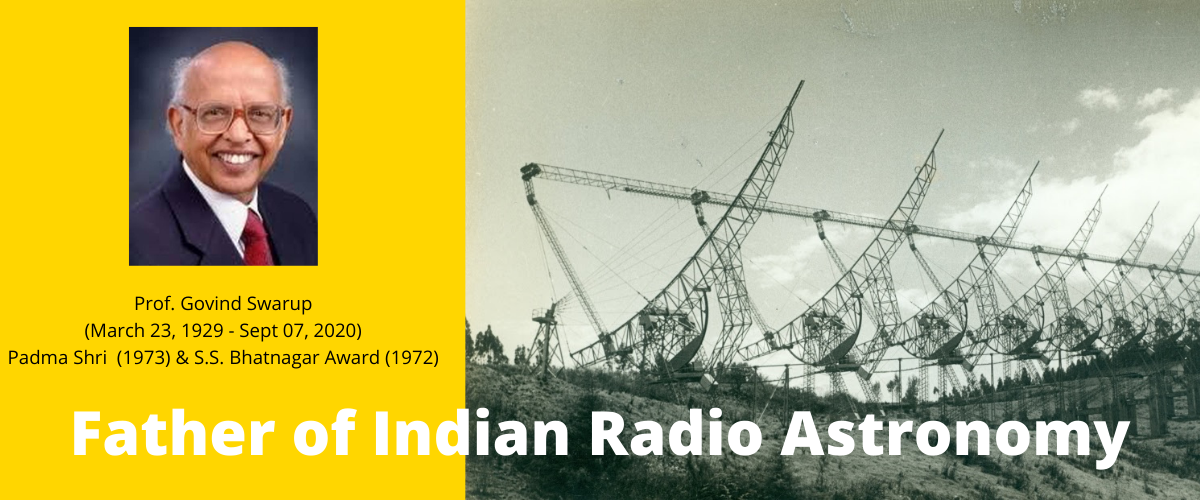Prof. Govind Swarup
March 23, 1929 – September 7, 2020
Govind Swarup : The father of radio astronomy in India

Govind Swarup was born on 23 March 1929 and spent his early year in the small town of Thakurdwara in the Moradabad district of the state of Uttar Pradesh. He obtained his MSc degree from Allahabad University in 1950 and joined the newly formed National Physical Laboratory (NPL). He began working in the area of paramagnetic resonance under the direction of the eminent physicist K. S. Krishnan.
Pott's Hill (1953-55)

Krishnan attended a conference in Australia in 1952, and was much impressed with the progress made in the nascent field of radio astronomy since the end of the second World War. Much work was happening at the CSIRO’s Division of Radio Physics. Krishnan recommended Govind Swarup for a Colombo Plan fellowship to spend two years at Pott’s Hill near Sydney to work with the Australian group and come up to speed with the latest technology in the field. Swarup and Parthasarathy from the Kodaikanal Observatory spent two years in Australia from 1953-1955 working for 3 months in each of the research groups there under the overall supervision of Prof. Joseph Pawsey, himself a founder of radio astronomy in Australia. Pawsey become a mentor to Swarup and guided him closely over the next decade of his career. Swarup and Parthasarathy worked extensively on studying the Sun with the array.
Fort Davis and Stanford (1956-62)

In 1956, Swarup joined the Fort Davis Radio Astronomy station of Harvard Observatory, located in Texas, to continue his studies of the Sun. Swarup discovered a new type of burst from the Sun - a Type U burst - during his stay at Harvard. He decided to do a PhD in the USA and was accepted at all the major radio astronomy centres of the time - Harvard, Caltech and Stanford. He chose Stanford on Pawsey’s advice since the Stanford PhD program placed a greater emphasis on the newly emerging field of electronics.
In September 1957, he enrolled at Stanford University to work with Prof. Ron Bracewell (famous as the author of the leading textbook on Fourier transforms) and finished his thesis by 1960 on studies of the Sun using the cross-antenna interferometer at Stanford.
Back to India
At the back of his mind, always, was the plan to return to India to set up a radio astronomy group within the country. Swarup, along with three other Indians working in the field of radio astronomy abroad (Profs. Kundu, Krishnan and Menon) wrote a proposal to set up a radio astronomy facility in India and sent it to five major research organisations and agencies in September 1961.
The Ooty Radio Telescope

Around this time, he thought of a clever design for a new large telescope that could use the lunar occultation technique to find accurate positions of radio sources. These could then be used to distinguish between the Steady State and Big Bang theories.
This massive telescope, a 500 m long and 30 wide parabolic cyclinder had its rotation axis parallel to the earth’s rotation axis and could follow a radio source from rise to set. By 1970, the Ooty Radio Telescope (ORT) was complete.
Over the next decade, the Ooty Radio Telescope made many new discoveries in astronomy and contributed to studies of the Sun, interplanetary scintillation, pulsars and the most distant radio quasars. Swarup and his student Vijay Kapahi showed that radio source counts were consistent with the predictions of the Big Bang theory.
The Giant Metrewave Radio Telescope

By the early 1980s new technological developments made it possible to envision a telescope even bigger than the ORT. Swarup then dreamt up his biggest project yet, the Giant Meterwave Radio Telescope. The goal of this massive new telescope was to discover primordial hydrogen clouds in the very distant Universe.
The GMRT consists of 30 parabolic dishes of 45m diameter each. A novel design allowed the reflecting surface to be made from thin stainless steel wires, making the dish light and reducing wind effects.
The telescope was ready by the year 2000, and has since then been open to the international astronomy community. Astronomers from 40 countries have used the facility so far for studies of almost all kinds of radio sources.
After his retirement in 1994, Govind continued to pursue his interests in radio astronomy.
Awards and accolades have flowed in from around the world.

Click here to see Google Arts & Culture (Govind Swarup: Pioneering Radio Astrophysicist)





